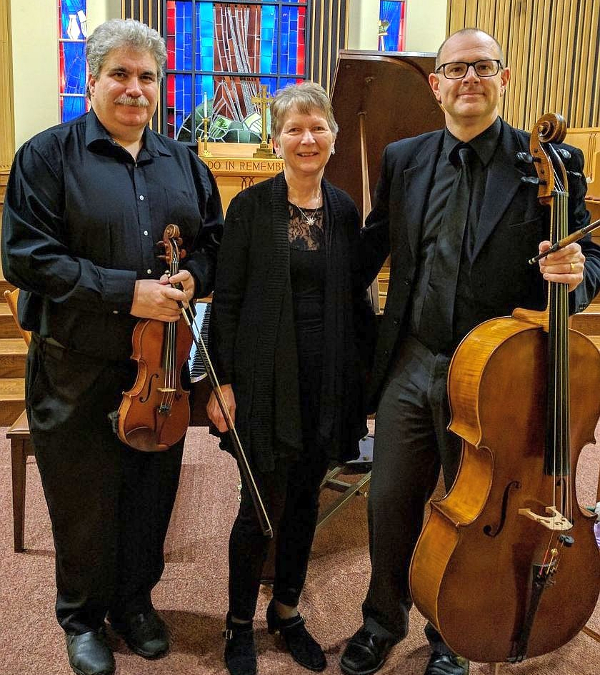March 26, 2021
Bruce Skelton ~ violin
Ben Bolt-Martin ~ cello
Joanne Bender ~ piano

Program
Andante cantabile, ma però con moto
Five Pieces – Dmitri Shostakovich (1906 - 1975)
(trans. Bruce Skelton)
Gavotte
Elegy
Waltz
Polka
Program Notes
Beethoven's Piano Trio in B-flat major Op. 97 is one of his best-loved works. Completed in 1811, it earned the name "Archduke Trio" as Beethoven dedicated it to his student, friend and patron, the Archduke Rudolph, son of Leopold II, the Holy Roman Emperor.
Beethoven was the pianist for the trio’s 1814 Vienna premiere. He was at the end of the middle period of his career and his hearing had deteriorated so much that his playing was unclear and inaccurate. Sadly, Beethoven had to give up performing for the rest of his life.
In its regal aura and grand scope, the Archduke Trio reflects Beethoven's compositional mastery. The first movement is beautifully crafted in sonata form and features its well-known lyrical theme. The second Scherzo movement is a lilting dance in three-quarter time. A hymn-like theme and variations provides depth of expression in the third movement, which leads to a joyful grand finale.
The music of Dmitri Shostakovich is often dark and serious, but these Five Pieces – originally for two violins and piano – are nothing but enjoyable and entertaining.They were individually composed by Shostakovich as incidental music for various plays, ballets, or perhaps solo piano. Levon Atovmyan, a friend of Shostakovich’s, assembled the movements and they were published in 1970 as Five Pieces for Two Violins and Piano, but since then they have been adapted for other ensembles. The Prelude is both melancholy and genial. The Gavotte (a French courtly dance) is a lighthearted movement, while the Elegy sets a peaceful mood. The flowing mournful Waltz is in the style of Russian light music. The finale is a comical Polka, guaranteed to make the listener smile!

